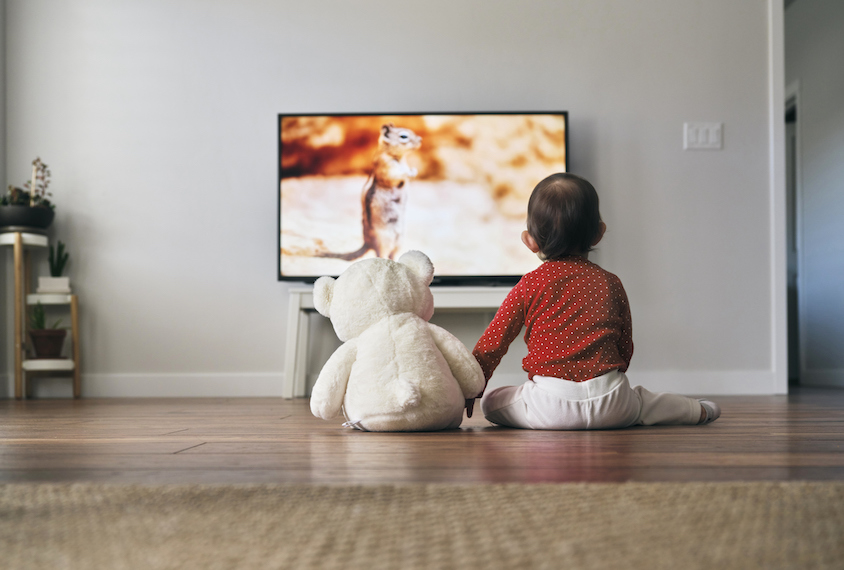A study published yesterday in JAMA Pediatrics prompted headlines such as “Baby boys who watch TV for at least two hours a day are 3.5 times more likely to be diagnosed with autism by age three, study finds.” Spectrum asked statistics expert Kristin Sainani, associate teaching professor of epidemiology and population health at Stanford University in California, for her thoughts.
Headlines this week touted a new study that suggests 1-year-old boys, but not girls, who spend two to four hours per day watching TV have an increased chance of being diagnosed with autism by age 3. So what can researchers take away from the paper?
The study’s aim was to understand how screen time affects a child’s chances of having autism. To answer that question, they recruited a large number of participants: more than 84,000 women, from 15 regional health centers across Japan. Each woman was pregnant between January 2011 and March 2014. When the children from those pregnancies were 1 year old, the women answered a multiple-choice survey question: How many hours does your child spend, per day, watching TV or DVDs? Answer choices ranged from zero to more than four hours. Most women said that their child watched less than two hours per day.
The women answered the survey question again when their child turned 3, and they also reported whether the child had been diagnosed with autism “by a doctor from the age of 2 years until now,” according to the study. These sorts of surveys are inherently problematic because they can introduce bias. A woman who under-reports her infant’s TV watching because it’s socially unacceptable may also be less likely to report an autism diagnosis.
In the study, just 330 out of 84,030 women said that their child had been diagnosed with autism by age 3, a prevalence of about 0.4 percent. There were three times as many autistic boys as autistic girls, and the proportion of children with autism increased as screen time increased, according to the study.
But the households in which 1-year-olds watch little or no TV likely differ from those in which babies watch more than two hours a day.
The findings are also hard to evaluate because the study lacks detailed information about variables that correlate with infant TV watching. Age, parental attitudes and whether or not a child has a TV in her bedroom are all positive predictors of screen time, according to a 2012 paper. These factors were either not measured or only crudely accounted for in the new study.
The researchers did control for maternal age and socioeconomic status, but only in a binary way. For example, women were lumped together if they were older or younger than 19 years, and households were similarly lumped together if they were above or below the poverty line.
A better way to adjust for each mother’s age and socioeconomic status would have been, instead, to use a larger, more nuanced, gradation of values. The new paper’s results may also conflict with prior work; spending a lot of time watching TV has no relation to language or visual motor skills by age 3, according to a 2009 study in Pediatrics. In that more-than-decade-old paper, the authors controlled for household income and maternal education, both of which they found were independently related to the amount of time children spend watching TV.
All of this is to say that, without proper adjustment for confounding factors, any link between infant TV watching and autism is difficult to evaluate.






